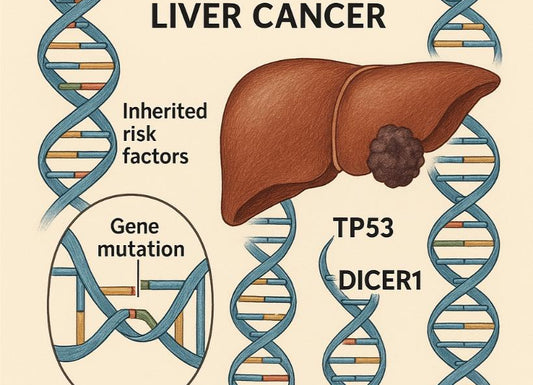Hepatopulmonary Syndrome – Causes, Diagnosis, Treatment, and Prognosis
 Written By
Yusela Aquino
Written By
Yusela Aquino

Hepatopulmonary syndrome (HPS) is a serious complication of liver disease that affects the lungs and impairs oxygen exchange, causing difficulty breathing, particularly when standing up, due to abnormal blood vessel dilation in the lungs. Although it is potentially life-threatening, many cases go undiagnosed due to a lack of awareness and subtle early symptoms.
Often, HPS is referred to as hepatic pulmonary syndrome, but the term "hepatopulmonary syndrome" is more widely recognized in medical literature. Regardless of the terminology, early detection is key. If left untreated, HPS can progress rapidly, leading to severe hypoxia (low levels of oxygen in the body) and a poor prognosis. Recognizing the symptoms early and understanding available treatments can make a big difference in outcomes. With ongoing research and medical advancements, there is hope for improved management strategies for those affected by this condition.
Hepatopulmonary Syndrome Pathophysiology and Mechanisms
Hepatopulmonary Syndrome (HPS) occurs when liver disease leads to abnormal widening of the lung blood vessels, impairing oxygen exchange. The hallmark feature of HPS is the widening of small pulmonary vessels, particularly in the lower lung zones, disrupting normal gas exchange. This is known medically as intrapulmonary vascular dilation (IPVD).
Under normal conditions, blood flow through the lungs is regulated to ensure efficient oxygen transfer in the small air sacs called alveoli. However, in HPS, dilated blood vessels allow blood to pass through too quickly. Some blood also bypasses ventilated alveoli entirely, reducing oxygen levels in the blood vessels even further. This mismatch in ventilation and blood flow leads to low blood oxygen levels (called arterial hypoxemia), which is a defining characteristic of HPS.
The Role of Nitric Oxide (NO) in HPS
An important contributor to HPS is excess nitric oxide (NO). NO is potent in widening the blood vessels, and in HPS, its overproduction causes excessive capillary widening, worsening oxygenation defects. Even though the lungs are structurally normal, the altered blood flow prevents adequate oxygen delivery to tissues, leading to progressive hypoxia.
Key Clinical Consequences
- Platypnea – Shortness of breath that worsens in an upright position, because gravity shifts more blood to the widened lower lung regions, making oxygenation defects worse.
- Orthodeoxia – A drop in arterial oxygen levels when upright, due to increased shunting and ventilation-perfusion mismatch.
These hallmark symptoms arise because the lung bases experience greater widening of blood vessels, leading to worsened hypoxemia when standing.
Causes of Hepatopulmonary Syndrome in Liver Disease Patients
Liver cirrhosis, where the liver becomes scarred and loses function over time, is the primary cause of hepatopulmonary syndrome. It disrupts normal liver processes, resulting to the production of harmful substances that enter the bloodstream and affect the lungs. It is seen in approximately 30% of those with liver cirrhosis and portal hypertension.
Aside from cirrhosis, other liver conditions like chronic hepatitis, nonalcoholic fatty liver disease (NAFLD), and autoimmune liver diseases are linked to the development of HPS. Even individuals with liver dysfunction without overt cirrhosis can develop HPS, emphasizing the need for routine screening in patients with chronic liver disease.
Stages of Hepatopulmonary Syndrome
HPS is typically classified into mild, moderate, and severe stages based on arterial oxygen levels (PaO2).
· Mild cases - PaO2 is 80 mmHg and above
· Moderate cases – PaO2 of 60-80 mmHg
· Severe cases - PaO2 of 50-60 mmHg
· Very severe cases – PaO2 of less than 50 mmHg
As HPS progresses, symptoms worsen, making even simple activities like walking or climbing stairs exhausting. Advanced stages often require supplemental oxygen therapy and, in many cases, liver transplantation becomes the only viable treatment option. Without proper management, severe HPS can lead to respiratory failure, making early intervention crucial.
Prevalence and Risk Factors
Reports suggest that approximately 5-32% of liver cirrhosis patients develop HPS. The condition is found in people with liver disease worldwide, affecting men and women equally.
Interestingly, the presence of HPS does not always correlate with the severity of liver disease. Even patients with compensated liver disease (where liver function is still relatively preserved) may develop significant lung impairment. This highlights the importance of routine screening for HPS in all patients with chronic liver conditions.
Liver cirrhosis, portal hypertension, genetic predisposition, environmental factors, and immune system abnormalities may contribute to HPS development.
Hepatopulmonary Syndrome vs. Portopulmonary Hypertension
HPS and portopulmonary hypertension (PoPH) are both lung-related complications of liver disease, but they have distinct mechanisms.
· HPS - characterized by widened blood vessels leading to poor oxygenation
· PoPH - involves narrowed blood vessels causing high blood pressure in the lungs.
Misdiagnosis can occur because both conditions present with shortness of breath and fatigue, but their treatments are very different. HPS requires oxygen therapy and liver transplant evaluation, whereas PoPH is treated with medications that lower pulmonary artery pressure. Recognizing these differences is crucial to providing the right treatment.
Recognizing Hepatopulmonary Syndrome Signs and Symptoms
The most common symptom of HPS is shortness of breath (dyspnea) that worsens when standing or sitting upright and improves when lying down. This phenomenon, known as platypnea-orthodeoxia syndrome, is a hallmark of HPS and helps distinguish it from other respiratory conditions. Additional symptoms may include:
· Cyanosis (bluish discoloration of the lips and fingertips due to low oxygen levels)
· Clubbing of the fingers (widening and rounding of the fingertips)
· Fatigue and weakness
· Exercise intolerance
· Increased susceptibility to infections
Patients with mild HPS may have no symptoms, making it essential for those with chronic liver disease to undergo screening even in the absence of noticeable breathing difficulties.
Early detection through these tests can significantly improve patient outcomes, allowing for timely intervention and management.
Diagnosis of Hepatopulmonary Syndrome
Diagnosing HPS requires a combination of clinical symptoms, blood tests, and imaging studies. Doctors typically look for signs of liver disease alongside symptoms of oxygenation impairment (like platypnea and orthodeoxia).
Several tests help confirm an HPS diagnosis, including:
· Arterial Blood Gas (ABG) Test - Measures oxygen levels in the blood.
· Pulse Oximetry - Assesses oxygen saturation, particularly in different positions.
· Contrast-Enhanced Echocardiography (Bubble Study) - Detects abnormal blood vessel dilation.
· Lung Perfusion Scan - Evaluates oxygen exchange efficiency.
Treatment Options for Hepatopulmonary Syndrome
Medical Management
· Oxygen Therapy: Helps relieve symptoms by improving oxygen delivery to tissues.
· Medications: Limited effectiveness; ongoing research on nitric oxide inhibitors.
Liver Transplantation
Liver transplant is currently the most effective treatment for HPS. Studies show that successful transplantation leads to complete resolution of lung abnormalities in most cases.
Prognosis and Long-Term Outlook
Without a liver transplant, severe HPS has a poor prognosis, with high mortality rates due to respiratory failure. However, with early detection and proper management, outcomes improve significantly.
Knowledge and Action
Although HPS is most commonly associated with cirrhosis, it can develop in individuals with various forms of liver disease. Early detection is very important, as symptoms like shortness of breath, platypnea, and low oxygen levels can progressively worsen without intervention.
Currently, liver transplantation remains the most effective treatment for HPS, but supportive therapies such as oxygen supplementation and careful medical management can help improve symptoms and prolong survival. Ongoing research continues to explore potential treatments that may offer non-transplant options for affected individuals.
If you or a loved one has liver disease, staying proactive about health monitoring is essential. Regular check-ups, oxygen level assessments, and early screening for complications like HPS can make a significant difference in outcomes. At Ribbon Checkup, we offer reliable at-home liver function test kits that allow you to monitor your liver health conveniently. Early detection of liver-related issues could help prevent complications like HPS before they progress. Take control of your liver health today with Ribbon Checkup’s easy-to-use testing solutions!
References
Bansal, K., Gore, M., & Mittal, S. (2022, December 6). Hepatopulmonary syndrome. StatPearls - NCBI Bookshelf. https://www.ncbi.nlm.nih.gov/books/NBK562169/
Cosarderelioglu, C., Cosar, A. M., Gurakar, M., Dagher, N. N., & Gurakar, A. (2016). Hepatopulmonary Syndrome and liver transplantation: A Recent review of the literature. Journal of Clinical and Translational Hepatology, 4(1), 47–53. https://doi.org/10.14218/jcth.2015.00044
Gandhi, K. D., Taweesedt, P. T., Sharma, M., & Surani, S. (2021). Hepatopulmonary syndrome: An update. World Journal of Hepatology, 13(11), 1699–1706. https://doi.org/10.4254/wjh.v13.i11.1699
Ferri, F.F. (2023). Ferri’s Cliical Advisor (2022). Elsevier.
Kumar, V., Abbas, A. K., & Aster, J. C. (2020). Robbins & Cotran Pathologic Basis of Disease (10th ed.). Elsevier.
Tumgor, G. (2014). Cirrhosis and hepatopulmonary syndrome. World Journal of Gastroenterology, 20(10), 2586. https://doi.org/10.3748/wjg.v20.i10.2586

Yusela is a medical student with a degree in Biology and a strong foundation in health communication. With experience in both research and clinical settings, she writes clear, evidence-informed content to help patients and caregivers better understand liver health, chronic disease, and transplant care.



